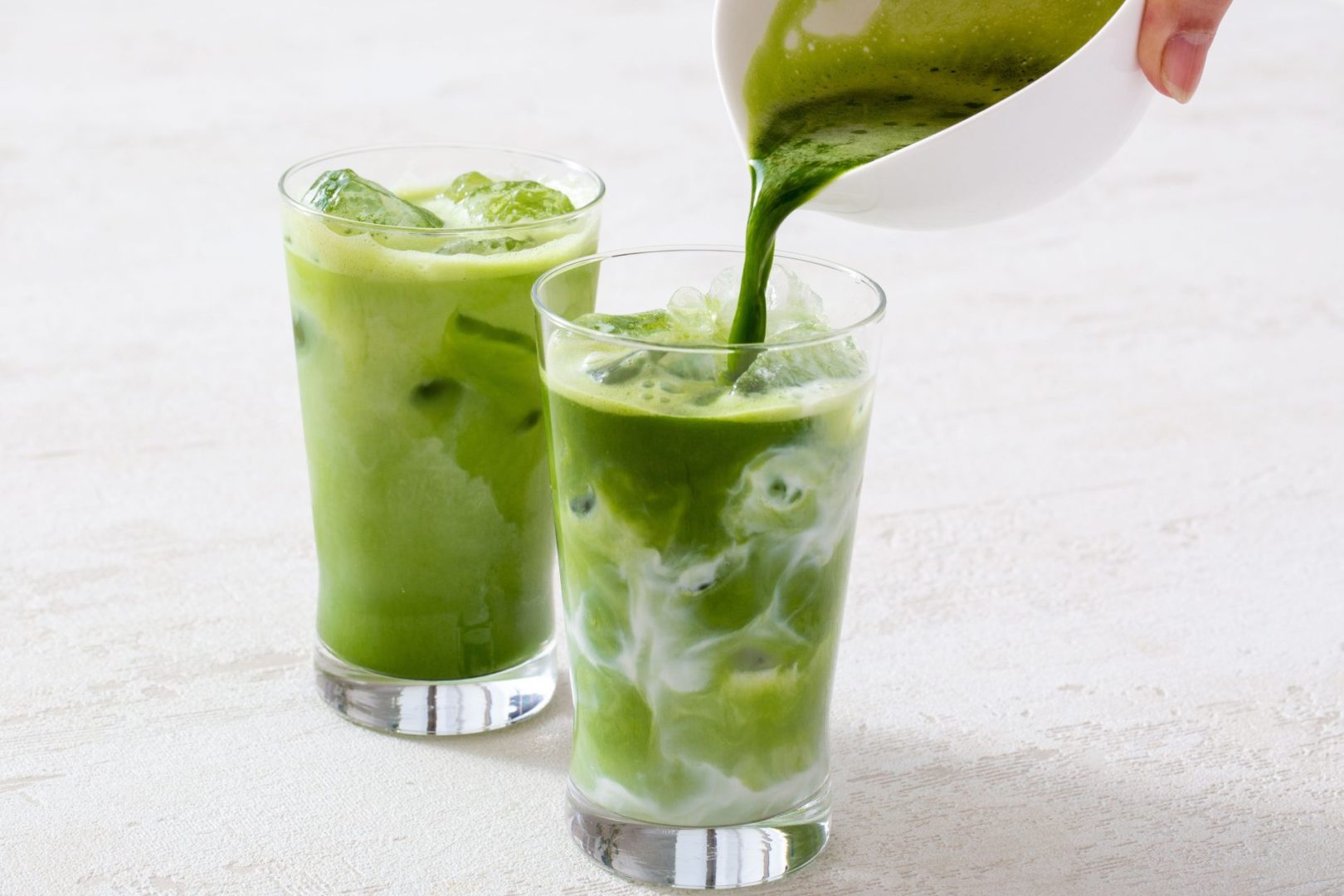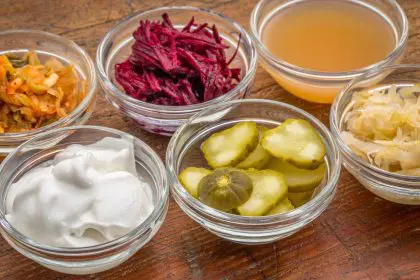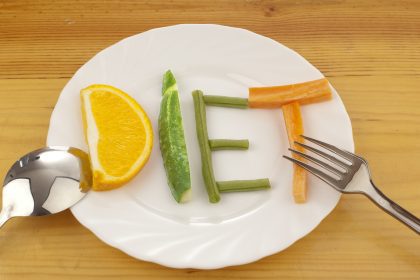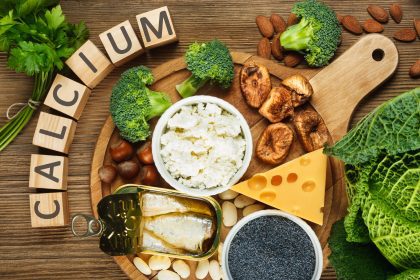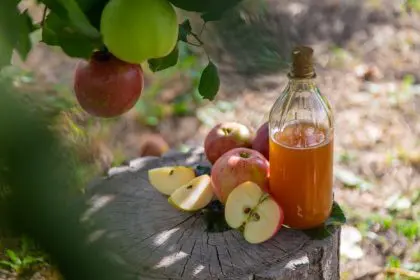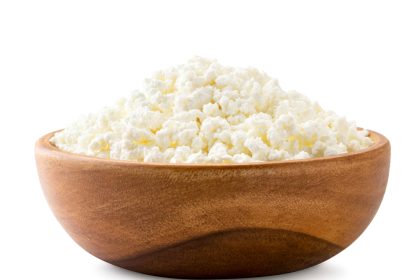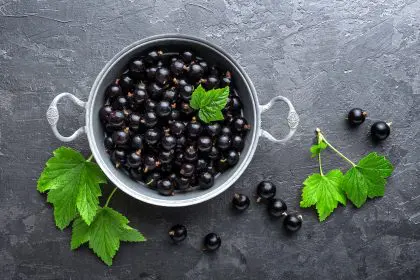That trendy matcha latte could be silently disrupting your body’s ability to absorb essential nutrients.
The rise of matcha mania
The distinctive emerald-green powder has transformed from an ancient Japanese tradition into a modern wellness phenomenon. Matcha’s journey from ceremonial tea houses to mainstream coffee shops represents one of the most significant beverage trends of recent years. The fine powder, made from specially grown and processed green tea leaves, has captured the attention of health enthusiasts, social media influencers, and casual consumers alike.
American consumers have embraced matcha with particular enthusiasm, with the U.S. becoming one of the world’s largest importers. The matcha market has grown explosively, with sales exceeding $10 billion over the past 25 years. This growth shows no signs of slowing as matcha continues appearing in everything from lattes and smoothies to ice cream, cookies, and even savory dishes.
Beyond its photogenic green hue that dominates social media feeds, matcha appeals to modern consumers seeking both health benefits and novel culinary experiences. The powder contains concentrated antioxidants, provides a more sustained energy boost than coffee, and offers a distinctive flavor profile described as grassy, slightly bitter, and complex. These qualities have helped matcha transcend mere trend status to become a fixture in contemporary food culture.
How matcha differs from regular green tea
While matcha and standard green tea originate from the same plant, Camellia sinensis, the similarities largely end there. Matcha production follows a specialized process beginning weeks before harvest, when tea plants are covered to limit sunlight exposure. This shade-growing technique increases chlorophyll production, enhances amino acid content, and creates the vibrant green color distinctive to high-quality matcha.
The harvesting process focuses exclusively on the youngest, tenderest leaves, which undergo careful steaming, drying, and destemming. These processed leaves, called tencha, are then stone-ground into an ultrafine powder so delicate that traditional production yields only 30-40 grams per hour. This laborious process explains both matcha’s premium price point and its concentrated nutritional profile.
Unlike regular green tea where leaves are steeped and discarded, matcha preparation involves whisking the powder directly into water, resulting in consumption of the entire leaf. This fundamental difference means matcha delivers substantially higher concentrations of both beneficial compounds and potentially problematic substances – including tannins, which have sparked recent health concerns.
The warning signs bringing attention to matcha
Recent discussions across social media platforms have highlighted potential downsides to regular matcha consumption, particularly regarding iron absorption and anemia risk. These concerns gained traction after several popular content creators shared personal experiences linking their matcha habits to unexpected health issues.
Video testimonials describing persistent fatigue, unusual paleness, and confirmed iron deficiency diagnoses following regular matcha consumption have garnered millions of views. These personal accounts typically follow a similar pattern: the adoption of a daily matcha routine, the gradual onset of fatigue and other symptoms, and eventual medical confirmation of iron deficiency despite no other apparent dietary or health changes.
While these anecdotal reports don’t constitute scientific evidence, they’ve sparked valuable conversations about the potential downsides of wellness trends that often receive uncritical promotion. The resulting dialogue has encouraged deeper examination of how compounds in popular health foods might interact with essential nutrient absorption.
Understanding tannins and their effect on iron
The connection between matcha and potential iron issues centers around compounds called tannins, which occur naturally in many plant foods. These polyphenolic compounds serve protective functions in plants and provide astringent, bitter flavor notes in foods and beverages including tea, coffee, wine, and certain fruits.
Tannins bind to dietary iron in the digestive tract, forming complexes that the body cannot easily absorb. This interaction primarily affects non-heme iron, the type found in plant foods, which already has lower bioavailability than the heme iron found in animal products. For people consuming primarily plant-based diets, this interaction becomes particularly relevant to maintaining adequate iron status.
Matcha contains significantly higher tannin concentrations than regular green tea due to its whole-leaf composition and processing methods. Some estimates suggest matcha may contain up to three times the tannin content of regular green tea, potentially creating a more pronounced effect on iron absorption when consumed regularly, especially alongside meals.
5 groups at highest risk for matcha-related iron issues
- Women with heavy menstrual periods
Women experiencing significant monthly blood loss already face elevated iron deficiency risk, with research suggesting up to 30% may have depleted iron stores even without considering dietary factors. For these individuals, the additional impact of tannin-rich beverages like matcha could potentially tip the balance toward deficiency.
Regular matcha consumption, particularly when paired with meals, might further compromise iron status in this vulnerable group. The combination of physiological iron loss and reduced absorption efficiency creates a scenario where even minor impediments to iron uptake become meaningful.
- Pregnant and postpartum women
Pregnancy dramatically increases iron requirements as maternal blood volume expands and the developing fetus demands iron for growth. Daily iron needs nearly double during pregnancy, making efficient absorption crucial for preventing deficiency.
New mothers also face elevated iron needs during recovery from childbirth and while breastfeeding. During these physiologically demanding periods, the iron-binding effects of regular matcha consumption might contribute to inadequate iron status despite seemingly adequate dietary intake.
- Plant-based diet followers
Vegetarians and vegans consume exclusively non-heme iron, which has substantially lower bioavailability (about 2-20%) compared to heme iron from animal sources (15-35%). This difference already necessitates careful attention to iron intake and absorption for those following plant-based diets.
When tannin-rich beverages like matcha further reduce non-heme iron absorption, maintaining adequate iron status becomes increasingly challenging. Plant-based eaters who embrace matcha as part of their wellness routine might inadvertently create nutritional challenges despite their health-conscious intentions.
- Adolescents during growth spurts
Rapid growth periods increase iron requirements substantially as new tissue formation and blood volume expansion demand additional resources. Adolescents often combine these physiological needs with dietary patterns that may not prioritize iron-rich foods, creating baseline vulnerability to suboptimal iron status.
The addition of regular matcha consumption, particularly when it replaces more nutrient-dense beverages or accompanies meals, might further compromise iron nutrition during these critical developmental periods.
- People with gastrointestinal conditions
Individuals with celiac disease, inflammatory bowel disorders, or other conditions affecting nutrient absorption already face challenges maintaining optimal iron status. These conditions often reduce the intestinal surface area available for nutrient uptake or alter the digestive environment in ways that impair absorption efficiency.
For these individuals, the additional impact of tannins from regular matcha consumption could compound existing absorption difficulties, potentially contributing to iron deficiency even when dietary intake appears adequate.
The science behind the matcha-anemia connection
The relationship between tea consumption and iron status has been investigated in multiple research contexts, though specific studies focusing on matcha remain limited. Available evidence suggests several key insights relevant to understanding potential risks.
Laboratory studies consistently demonstrate that tea extracts reduce non-heme iron absorption significantly – by 60-90% in some experimental models. These effects appear dose-dependent, with stronger teas and longer steeping times creating more pronounced inhibition. Matcha, with its whole-leaf composition and concentrated preparation, typically delivers higher tannin levels than steeped teas, suggesting potentially stronger effects.
Population studies show mixed results, likely reflecting the complexity of dietary patterns and individual variations in iron metabolism. Research among populations with high tea consumption sometimes shows correlations with lower iron status, particularly in vulnerable groups like young women and children in developing regions where dietary iron might already be limited.
Timing appears critical in determining tea’s impact on iron nutrition. Studies indicate that consuming tea with meals reduces iron absorption more significantly than drinking it between meals. This timing effect provides important context for practical recommendations about matcha consumption patterns.
How to enjoy matcha without risking your iron health
While the evidence suggests caution regarding matcha’s potential impact on iron absorption, complete avoidance isn’t necessary for most people. Several practical strategies can help minimize risks while still enjoying this popular beverage:
Mind your timing: The most effective approach involves separating matcha consumption from iron-rich meals. Waiting at least one hour after eating before drinking matcha significantly reduces its impact on iron absorption. Similarly, finishing your matcha at least an hour before eating iron-containing foods helps ensure optimal nutrient uptake.
Add vitamin C: Pairing iron-rich foods with vitamin C sources dramatically improves absorption – often enough to overcome the inhibitory effects of tannins. Adding lemon to iron-rich meals or consuming vitamin C-rich fruits alongside them can help counteract matcha’s potential impact when timing separation isn’t possible.
Consider calcium carefully: While calcium-fortified matcha lattes have become popular, this combination might compound absorption issues since calcium also inhibits iron uptake. Those concerned about iron status might opt for matcha prepared with water or non-calcium-fortified plant milks.
Monitor serving size: Limiting matcha to one serving daily, ideally between meals, allows enjoyment of its benefits while minimizing potential nutrition concerns. This moderation approach is particularly important for those in higher-risk categories for iron deficiency.
Boost overall iron intake: Increasing dietary iron, particularly through heme sources (meat, fish, poultry) for non-vegetarians, helps offset potential absorption reductions. Plant-based eaters can focus on combining iron-rich foods like lentils, tofu, and dark leafy greens with absorption enhancers like citrus fruits, bell peppers, or strawberries.
Signs your matcha habit might be affecting your iron levels
Recognizing potential iron deficiency early allows for simple dietary adjustments before more significant interventions become necessary. Several symptoms might suggest your matcha consumption is affecting iron status:
Unusual fatigue that seems disproportionate to your sleep patterns and activity levels often represents the earliest and most common sign of declining iron status. This tiredness typically develops gradually rather than suddenly and persists despite adequate rest.
Pale skin, particularly noticeable inside the lower eyelids, lips, and nail beds, suggests reduced hemoglobin levels that might result from compromised iron status. This pallor often appears subtly at first, becoming more pronounced as deficiency progresses.
Shortness of breath during normal activities that previously caused no breathing difficulties can indicate decreased oxygen-carrying capacity due to reduced hemoglobin. This symptom typically begins with more vigorous activities before progressing to affect everyday movements.
Headaches and dizziness, particularly when changing positions quickly, may suggest insufficient oxygen delivery to the brain resulting from compromised red blood cell function. These symptoms often appear inconsistently at first before becoming more regular as deficiency advances.
Unusual cravings for ice, dirt, clay or other non-food substances, a condition called pica, sometimes accompanies iron deficiency though science hasn’t fully explained this connection. This symptom typically develops only in more advanced deficiency states.
When to consult healthcare providers about matcha and iron
While mild concerns about matcha and iron can often be addressed through dietary adjustments, certain situations warrant professional medical evaluation.
Individuals experiencing persistent fatigue, weakness, or other potential anemia symptoms despite dietary modifications should seek medical assessment rather than continuing self-management. These ongoing symptoms might indicate issues beyond the matcha-iron interaction or more significant deficiency requiring intervention.
Those with known risk factors for iron deficiency who consume matcha regularly benefit from routine blood work to monitor iron status. This preventive approach allows early detection of declining iron parameters before clinical symptoms develop.
People taking iron supplements should consult healthcare providers about optimal timing relative to matcha consumption. The concentrated supplemental iron interacts even more significantly with tannins than dietary iron, making proper separation essential for effective treatment.
Pregnant women particularly need professional guidance regarding matcha consumption and iron status, as both maternal and fetal health depend on maintaining adequate iron throughout pregnancy. Developing fetuses prioritize iron needs even at the expense of maternal status, making vigilance especially important.
Finding balance in your matcha routine
The dialogue surrounding matcha and iron absorption demonstrates a broader principle in nutrition: even beneficial foods can present challenges when consumption patterns don’t account for nutrient interactions. This nuanced perspective represents a maturation in nutritional understanding, moving beyond simplistic “superfoods” framing toward more contextual approaches.
For most healthy individuals without specific risk factors, moderate matcha consumption timed appropriately presents minimal concerns. The beverage offers legitimate benefits including antioxidant compounds, potential metabolic support, and for many, an appealing alternative to high-caffeine beverages like coffee.
Those in higher-risk categories for iron deficiency need not necessarily eliminate matcha entirely. Instead, thoughtful consumption patterns that separate matcha from iron-rich meals and incorporate absorption enhancers can allow continued enjoyment while minimizing potential downsides.
The matcha-iron interaction reminds us that nutrition functions as an interconnected system rather than a collection of isolated nutrients and compounds. This perspective encourages a holistic approach to dietary choices that considers not just what we eat and drink, but how these choices interact with one another.
Ultimately, awareness of matcha’s potential impact on iron absorption empowers consumers to make informed decisions aligned with their individual nutritional needs and health goals. This balanced understanding allows for appreciating matcha’s legitimate benefits while minimizing potential nutritional tradeoffs through thoughtful consumption patterns.

